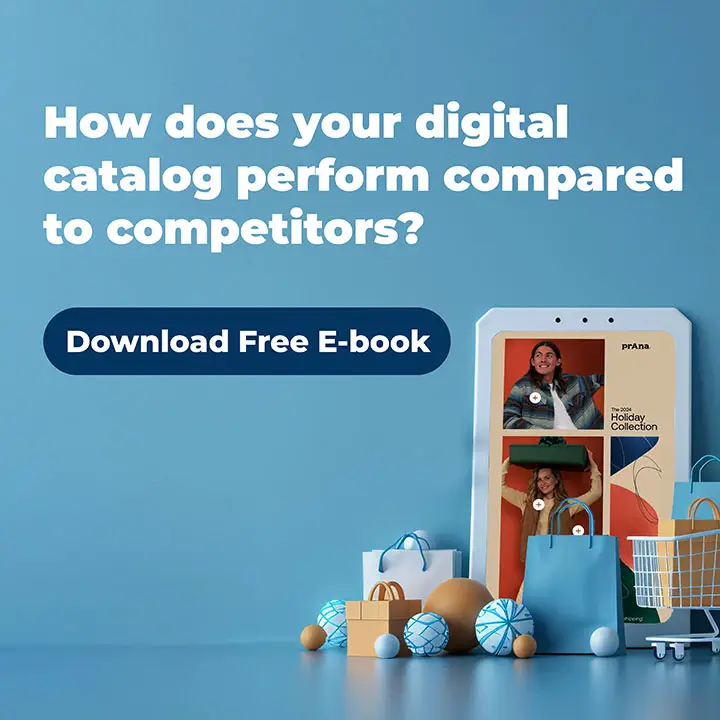Publitas accessibility: We want everyone to enjoy our platform—including the 1 billion people in the world who have visual, auditory, motor, or cognitive disabilities. That’s why we’re continuously improving the accessibility of our catalogs and publications.
When it comes to accessibility, we’re not alone. Many governments take accessibility seriously and have put laws in place specifically for it. Accessibility done well has a positive impact on the usability of your catalogs while also minimizing legal risk.
This post will explain what you need to know about our accessibility approach and what guidelines we follow. We’ll also show a few examples of how we’ve made our catalogs more accessible.
Our commitment to web accessibility
The most important accessibility guidelines for the web are aptly named Web Content Accessibility Guidelines (WCAG). We’re committing to continuously audit and improve our platform to ensure compliance with WCAG and usability for everyone.
We go beyond offering shoppers a simple PDF version of their favorite retailer’s catalog. Our content is made accessible on mobile and desktop so that anyone can navigate through text, products, images, and videos directly from within Publitas.
We want the same high-quality experience for everyone—regardless of disabilities.
Our compliance level—WCAG 2.1 AA
We are currently compliant with WCAG 2.1 level AA. Why?
The WCAG is among the most comprehensive and recognized accessibility guidelines around the world. Currently (January 2021), version 2.1 is the latest version of the guidelines.
Many governments reference the WCAG in their accessibility laws. Examples include the Web and Mobile Accessibility Directive in the European Union and the Americans with disabilities act (ADA) in the US.
By following the WCAG 2.1 level AA guidelines, we’re fulfilling the legal obligations that many jurisdictions worldwide require.
Some examples of how we improve accessibility
Our publications are fully keyboard-accessible
People with motor disabilities often rely on a keyboard or use specialized hardware to mimic keyboard input. That’s why we’ve made sure our publications can always be fully experienced using just a keyboard.
People can use the left & right keys to navigate through pages, and we’ve optimized the way users can use the keyboard to highlight and trigger interactive elements such as links and hotspots.

Screen readers understand our content
Screen readers turn visual content—such as text and images—into speech. This helps people who are blind or illiterate gain access to your content without relying on visual input.
We want screen readers and Publitas to be best friends. To achieve that, we’ve made sure that all content—ranging from the text in your publication to a product hotspot or an image—is readable by screen readers.
In most cases, it’s fully automated. In other cases, you’ll have to provide an ‘alternative’ text. For example, when using image hotspots. A small bonus is that using good alternative texts also helps boost your SEO.
How does Publitas help you design with accessibility in mind?
A large part of ensuring accessibility comes from creating and designing your content with accessibility in mind. We provide some simple features to help you out inside our app and offer services to audit and improve the accessibility of your content. Below we’ve highlighted some features and our accessibility assessment service.
Reordering the focus of clickable elements
Sometimes, the default order by which keyboard input takes users through your content might not be good enough. For these cases, you can use our accessibility options in the editor to manually change the order in which clickable elements are highlighted.


Providing clear hover texts
When a user highlights a clickable element, we show the hover text. It’s essential to use descriptive hover texts as it helps people clearly understand what happens when they click. As a small bonus, using clear hover texts also gives a boost to your publication’s findability (SEO)!
In our app, you can customize the hover texts, and for products, we offer a variable to display the product title in the hover text automatically.


Content accessibility assessment
We’re offering a new service to make sure your content plays nice with our accessibility features. We’ll go through your content and provide an overview of improvements to help you make your publications more accessible. Simply contact us if you want to know more.
Time to deliver accessible content
With our commitment to accessibility and following WCAG guidelines, we’ve made our content more enjoyable for many people in the world while also reducing legal risk.
Our accessibility features are still in BETA, meaning not all features might be available to everyone yet, and many more improvements are still to come.
If you’re interested in seeing how Publitas can help you deliver accessible content experiences, feel free to reach out and request a demo. Or, try any of our plans free for 14 days.


